By Carlo Putti, investment director, M&G Investments
US inflation came in lower than expected with headline inflation now at 7.7% YoY while core inflation at 6.3% YoY.
Inflationary pressures eased a touch as the deceleration in CPI was generally broad-based. Core goods turned negative for the month while core service ex rents decelerated (however this was partially due to a technical change in insurance inflation). Rents generally remains elevated, but will likely soften going forward reflecting the current state of the rental market.
Overall, this was a good report which reinforces the idea that inflation has peaked, and it is turning lower, however there is still no evidence we are returning to the 2% target anytime soon. Inflation has moved from core to services which is very sticky, and it is mainly driven by wages. We need to see more evidence that wage inflation is cooling before we can get more comfortable with inflation. So far, the labour market is still tight and wages still high. Wages will be the key to watch going forward.
Inflation update: good news and bad news
Good news:
- Money supply -> money supply growth (as measured by M2) has slowed significantly. The huge injection of money since Covid is what caused inflation, but since then money supply growth (as measured by M2) has slowed significantly and it is now at levels consistent with 2% inflation.
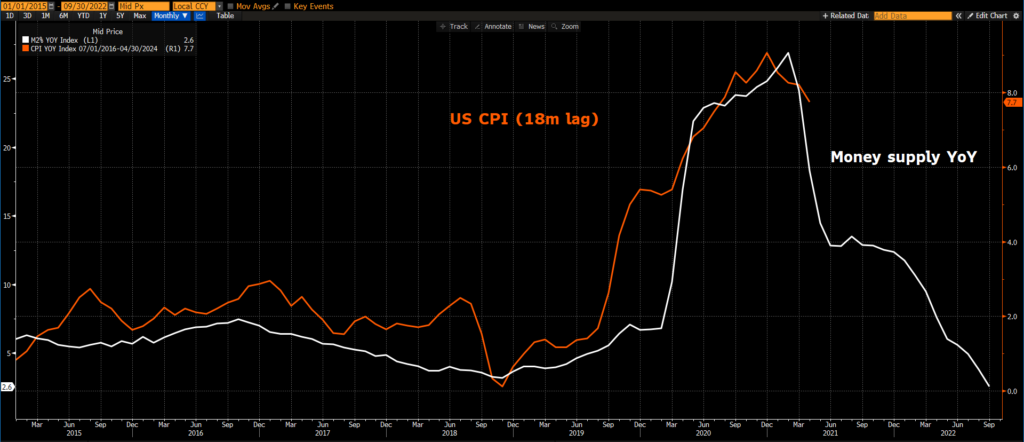
- Rents -> rents are key if you want to forecast US inflation as they represent a big part of the index (c.30% for headline CPI and c.40% for core CPI). Rents have been rising for most of the year, helping push inflation higher, but we now might be close to a turning point. Rents in the CPI index is usually a lagging indicator, due to the way it is constructed (for example, data for official rents is collected only twice per year in order to capture a larger sample). There are however more timely, albeit arguably less accurate, rents indicators and they all are suggesting a slowdown in rents growth. This slowdown will likely start to be reflected also in official measures over the next few months.
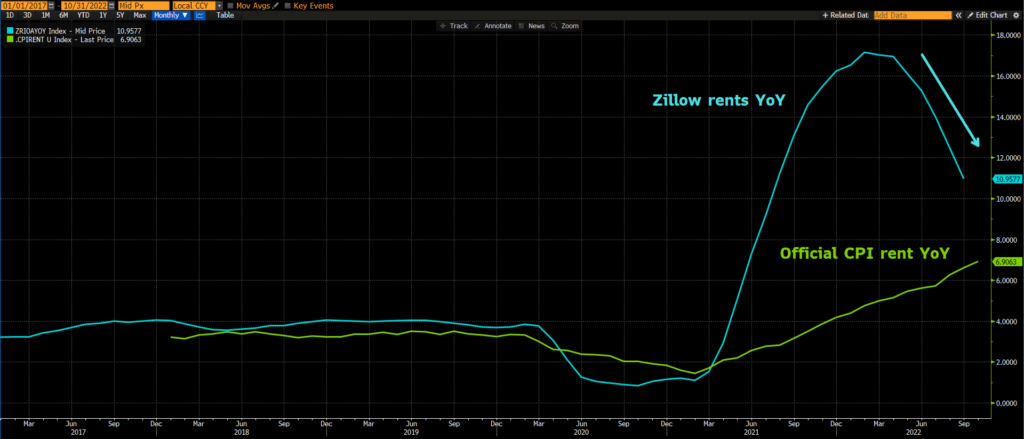
- Dollar -> the US dollar has been rising sharply this year and this has impacted and will continue to impact inflation, particularly goods inflation. As most of goods are imported, a strong US dollar likely results in lower goods prices.
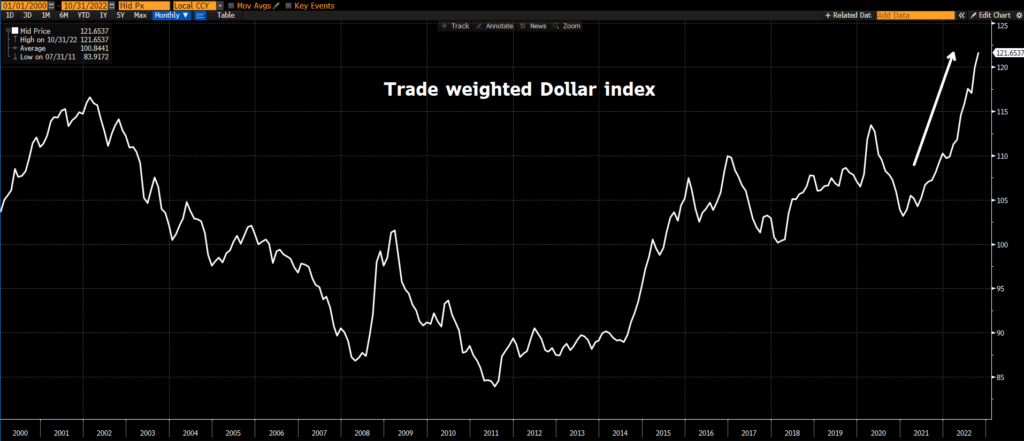
- Base effect -> this is more of a short term effect which might help push YoY inflation lower. Last year, from October to February, core CPI has been fairly high averaging almost 0.6% MoM. So for core inflation to keep rising YoY, we need to see some fairly high MoM numbers over the next 5 months. Possible, but tough given rents growth will likely start to moderate soon.
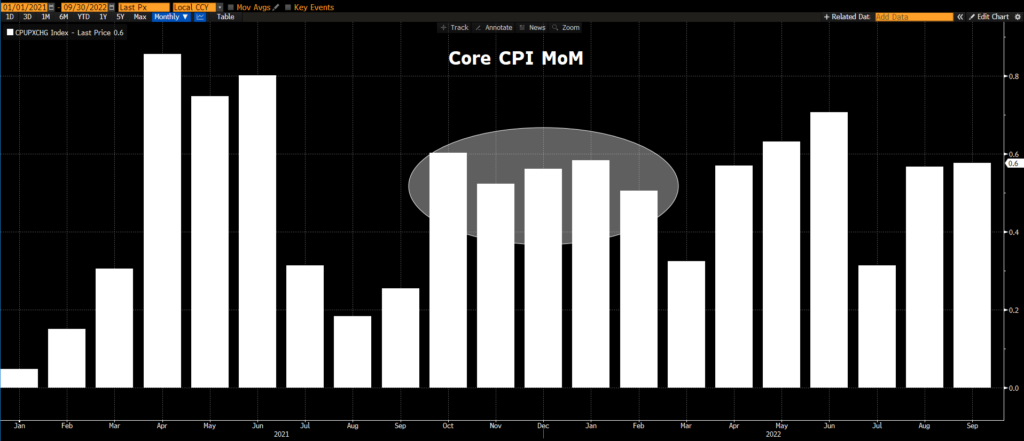
Bad news:
- Broad-based inflation -> inflation is now broad-based. It is not just a few items driving overall inflation up, most of the items are now seeing prices rising fast. A good way to visualise this is to look at median CPI, which is less impacted by outliers as it focuses on the core of the distribution
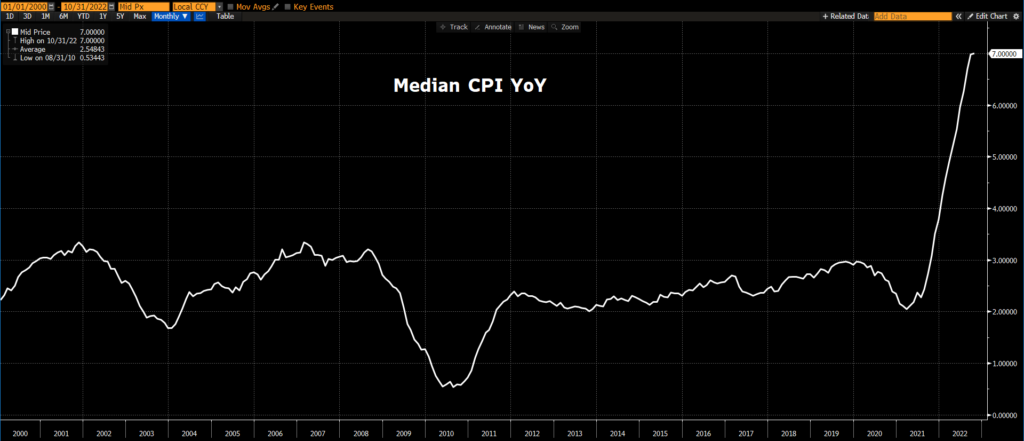
- Sticky inflation -> as economies reopened, people started to shift their consumptions away from goods into services. As a result, goods inflation is now decelerating, while service inflation is rising fast. The problem is that service inflation, unlike goods inflation, is usually very sticky. As a result, we might not see a sharp deceleration in inflation anytime soon.
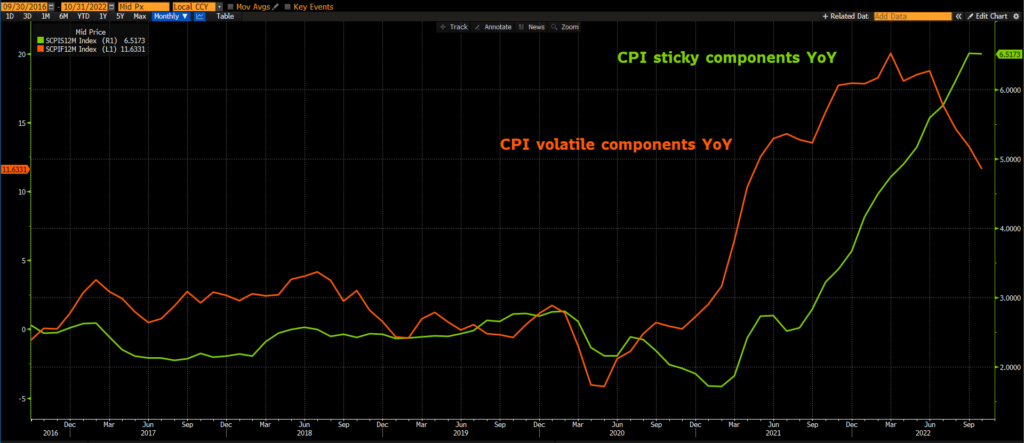
- Wages -> wages have been rising this year and this is important as wages are the major input cost for most services. If wage growth remains high or even accelerates from here, there is potential for more inflation surprises going forward. Keep an eye on wages and on a potential wage-price spiral as this is completely going to change the inflation picture for next year.
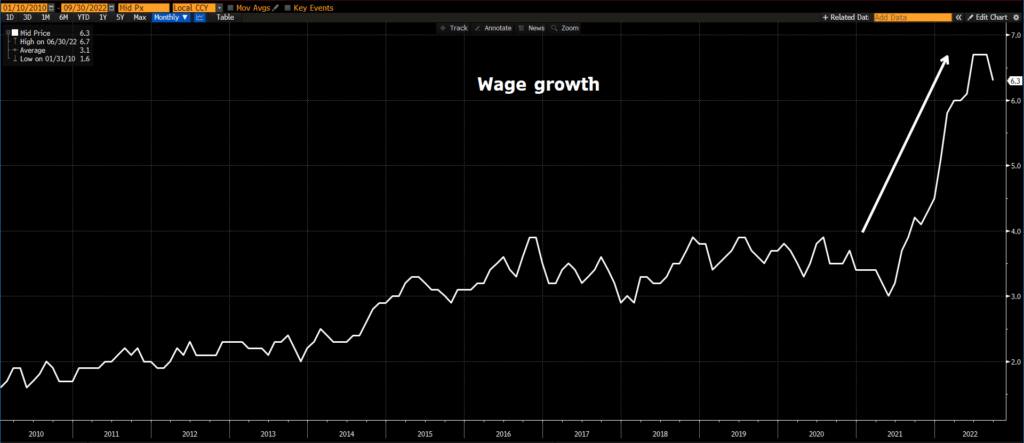
- Velocity -> one thing that hasn’t been discussed much so far is money velocity (how quickly money circulates within the economy). Higher rates usually pushes velocity up as consumers look for opportunities to deploy their cash. Recently we have seen an acceleration in money velocity and if this continues, inflation might remain elevated even if money supply fall.
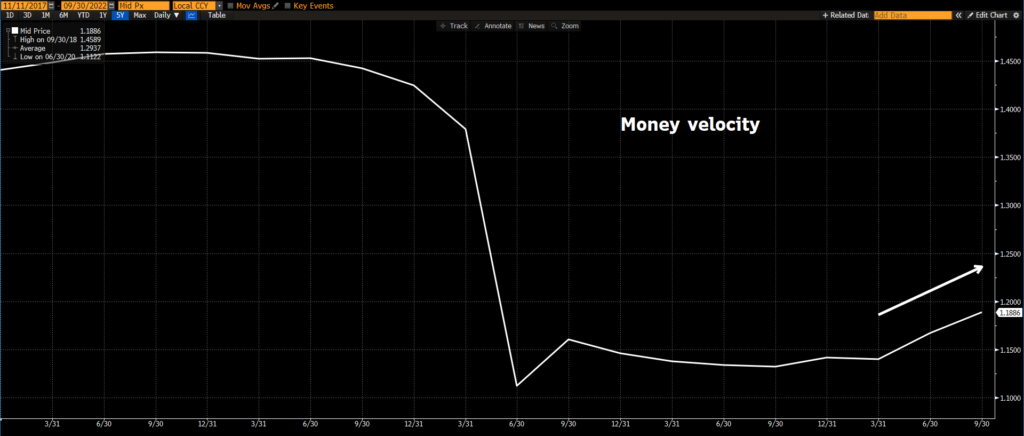
Conclusion: there seems to be light at the end of the inflation tunnel, particularly as money supply collapsed down to levels consistent with 2% inflation. Quantitative Tightening can accelerate this trend even further, potentially pushing M2 into negative territory. However, the velocity of money remains a big unknown at the moment and could keep inflation high even with low money supply.

















